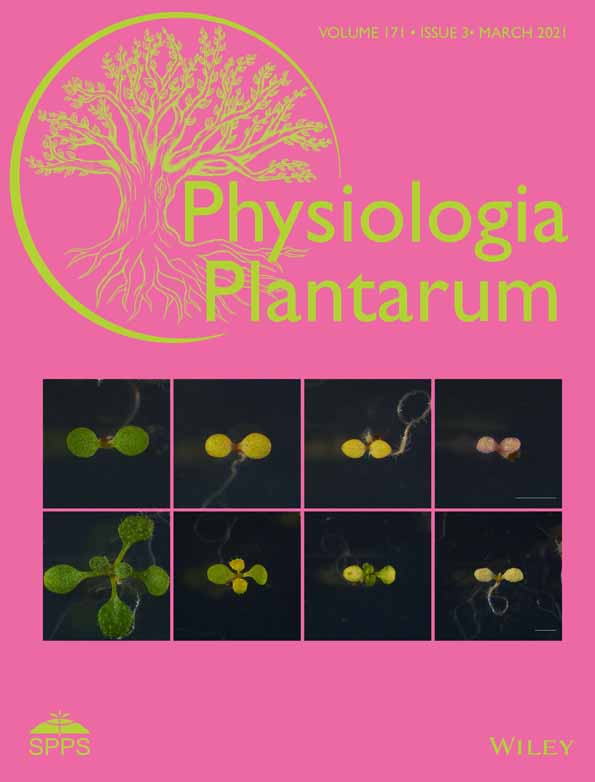Ver ítem
- xmlui.general.dspace_homeCentros e Institutos de InvestigaciónCIAP. Centro de Investigaciones AgropecuariasInstituto de Fisiología y Recursos Genéticos VegetalesArtículos científicosxmlui.ArtifactBrowser.ItemViewer.trail
- Inicio
- Centros e Institutos de Investigación
- CIAP. Centro de Investigaciones Agropecuarias
- Instituto de Fisiología y Recursos Genéticos Vegetales
- Artículos científicos
- Ver ítem
Contrasting adaptive responses to cope with drought stress and recovery in Cenchrus ciliaris L. and their implications for tissue lignification
Resumen
Cenchrus ciliaris L. is a widely used species for cattle feed in arid and semi-arid regions due to good forage value and known tolerance to drought conditions. Here, we provide insights to adaptive responses of two contrasting genotypes of C. ciliaris (drought-tolerant ‘RN51’ and drought-sensitive ‘RN1’) to
face drought stress and recovery conditions and the implications for tissue lignification. Drought stress
caused a reversible decrease in the leaf
[ver mas...]
Cenchrus ciliaris L. is a widely used species for cattle feed in arid and semi-arid regions due to good forage value and known tolerance to drought conditions. Here, we provide insights to adaptive responses of two contrasting genotypes of C. ciliaris (drought-tolerant ‘RN51’ and drought-sensitive ‘RN1’) to
face drought stress and recovery conditions and the implications for tissue lignification. Drought stress
caused a reversible decrease in the leaf water relationship and damage to photosystem II, leading to an increased generation of reactive oxygen species and lipid peroxidation. Plants of RN51 exhibited a
pronounced increase of antioxidant enzymatic activities. Unlike the drought-sensitive genotype, RN51
exhibited further development of lignified tissues and bulliform cells and had the greatest thickness of the adaxial epidermis. Drought stress led to the rapid activation of the expression of lignin biosynthesis
pathway-related enzymes. The transcript level of the caffeoyl-CoA-O-methyltransferase gene decreased in RN1, whereas cinnamoyl-CoA reductase transcripts were increased in RN51. After rewatering, the tolerant genotype recovered more rapidly than RN1. Even though the two genotypes survived when they were exposed to drought stress, RN1 showed the highest reduction in growth parameters, and this
reduction was sustained during rewatering.
[Cerrar]

Autor
Fuente
Physiologia Plantarum (2021)
Fecha
2020-11-12
Editorial
Wiley
ISSN
0031-9317
1399-3054 (online)
1399-3054 (online)
Documentos Relacionados
Formato
pdf
Tipo de documento
artículo
Proyectos
(ver más)
INTA/PNPA-1126072/AR./Desarrollo de cultivares superiores de especies forrajeras para sistemas ganaderos y agricolo-ganaderos de la Argentina.
Palabras Claves
Derechos de acceso
Embargado
 Excepto donde se diga explicitamente, este item se publica bajo la siguiente descripción: Creative Commons Attribution-NonCommercial-ShareAlike 2.5 Unported (CC BY-NC-SA 2.5)
Excepto donde se diga explicitamente, este item se publica bajo la siguiente descripción: Creative Commons Attribution-NonCommercial-ShareAlike 2.5 Unported (CC BY-NC-SA 2.5)

